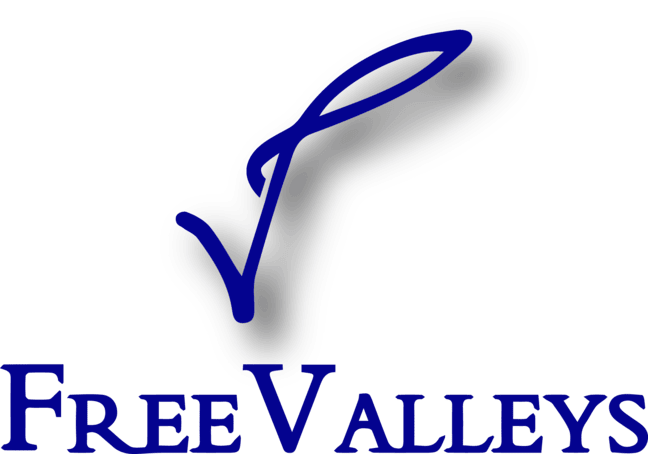Key Takeaways
| Aspect | Key Point |
| Market Reality | Purpose-driven businesses grow 28% faster than traditional companies and attract premium pricing |
| Consumer Demand | 66% of consumers pay more for sustainable brands, 47% stopped buying from companies with negative impact |
| Talent Advantage | 44% of Gen Z quit jobs lacking purpose, making mission-driven companies talent magnets |
| Revenue Models | Multiple streams work: products, services, partnerships, impact investing, and licensing |
| Measurement Matters | Track both financial KPIs and impact metrics using ESG frameworks and social return on investment |
| Funding Sources | Access grants, impact investors, crowdfunding, social venture capital, and government support |
| Success Formula | Balance purpose authenticity with business fundamentals—neither can survive without the other |
How to Turn Purpose Into a Profitable Business
The idea that you have to choose between doing good and making money? That’s outdated thinking. Purpose-driven businesses are actually outperforming traditional companies across almost every metric that matters. Companies with clearly defined purposes saw their sales increase over the last three years, while 85% of them reported significant growth. But here’s the thing—turning your purpose into profit isn’t about slapping a “save the world” sticker on your existing business model. It requires fundamentally rethinking how you create, deliver, and capture value.
The shift is happening because consumers, employees, and investors are all demanding more from businesses. They want companies that stand for something beyond just maximizing shareholder value. This creates a massive opportunity for entrepreneurs who can authentically align their mission with market needs. The key word there is “authentically”—because people can spot purpose-washing from a mile away, and it backfires spectacularly when they do.
What makes this moment different from previous “socially conscious” business trends? Scale and sophistication. We’re not talking about small niche markets anymore. Major corporations are restructuring their entire operations around purpose, and impact investing has grown into a trillion-dollar market. The infrastructure exists now to support businesses that want to do well by doing good. You just need to know how to access it and build a model that actually works in the real world.
Understanding the Purpose-Profit Connection

Most people misunderstand what makes purpose-driven businesses profitable. They think it’s about customers feeling good about their purchases or employees being more motivated (though both are true). The real profit drivers go much deeper than that. Purpose-driven companies benefit from premium pricing power, reduced customer acquisition costs, higher employee retention, and access to new funding sources that traditional businesses can’t tap into.
Let’s start with pricing. When your product or service is tied to a meaningful mission, customers become less price-sensitive. They’re not just buying a commodity; they’re participating in something larger than themselves. Research shows that 66% of global consumers are willing to pay more for sustainable brands, and this number jumps to 73% among millennials. That pricing power translates directly to higher margins, which gives you more resources to invest in both your mission and your growth.
Customer acquisition becomes more efficient too, but not in the way most people think. It’s not that your marketing costs go down—although word-of-mouth does tend to be stronger for purpose-driven brands. It’s that you attract customers who become evangelists. They don’t just buy from you; they sell for you. This creates a compounding effect where your early customers become your most effective sales force. But this only works if your purpose is genuine and your execution is solid.
The employee retention advantage is huge and often overlooked. It costs anywhere from 50% to 200% of an employee’s annual salary to replace them. Purpose-driven companies report significantly lower turnover rates, especially among high-performers. Gen Z and millennial workers—who now make up the majority of the workforce—actively seek out employers whose values align with their own. 44% of Gen Z workers have actually quit jobs that lacked purpose, and around 40% of both Gen Z and millennials have rejected job offers from companies that didn’t align with their values.
The funding landscape has completely changed too. Impact investors are no longer just philanthropists with low return expectations. They’re sophisticated investors who understand that purpose-driven businesses often outperform traditional companies in the long run. Social impact bonds, crowdfunding platforms specifically designed for mission-driven businesses, and government grant programs have created multiple pathways to capital that didn’t exist a decade ago.
Building Your Purpose-Driven Business Model
Here’s where most people get stuck—they have a great mission but can’t figure out how to make money from it sustainably. The business model canvas becomes your best friend here, but you need to think about it differently than a traditional business would. Your value proposition section needs to clearly articulate both the social impact and the personal benefit to customers. Your revenue streams need to account for the fact that some of your “customers” might be beneficiaries who can’t pay full price, while others might be supporters who’ll pay premium prices to subsidize those beneficiaries.
Start with your customer segments. Most purpose-driven businesses actually serve multiple types of customers simultaneously. You might have direct beneficiaries (the people your mission serves), paying customers (who fund the impact), and institutional supporters (who provide grants or partnerships). Each segment has different needs, different pain points, and different willingness to pay. You can’t treat them all the same.
Your value proposition has to work on multiple levels. For paying customers, you need to deliver genuine personal value—better product performance, superior service, or unique benefits they can’t get elsewhere. The purpose element enhances this but can’t replace it. For beneficiaries, you need to solve real problems in ways that preserve dignity and create lasting change. For institutional supporters, you need to demonstrate measurable impact and efficient use of resources.
Revenue streams in purpose-driven businesses tend to be more diverse than traditional companies. You might have product sales, service fees, licensing revenue, grant funding, donation income, and partnership fees all contributing to your bottom line. This diversity actually makes you more resilient, but it also makes financial planning more complex. You need systems to track and optimize each stream separately while understanding how they interact with each other.
The key partnerships section becomes especially important. Purpose-driven businesses often rely on partnerships more heavily than traditional companies because they’re trying to create systemic change, not just serve individual customers. You might partner with nonprofits for credibility and access to beneficiaries, with corporations for funding and scale, with government agencies for regulatory support and legitimacy, and with other social enterprises for shared resources and knowledge.
Your cost structure needs to account for impact measurement and reporting, which traditional businesses don’t have to worry about. You’ll need systems to track your social and environmental outcomes, staff who can manage stakeholder relationships across multiple sectors, and marketing that communicates complex value propositions to diverse audiences. These costs are real, but they’re also investments that enable premium pricing and access to specialized funding sources.
Funding Your Mission-Based Enterprise

The funding landscape for purpose-driven businesses is completely different from traditional startups, with both more opportunities and more complexity. You need to understand the full spectrum of options and how they align with different stages of your business development. Each funding source comes with different expectations, requirements, and strategic implications that go far beyond just the money.
Grant funding is often the starting point for social enterprises, but it’s also the most misunderstood. Grants aren’t free money—they come with detailed reporting requirements, specific outcome expectations, and often restrictions on how funds can be used. But they’re valuable for proving concept, building track record, and developing the systems you’ll need for other funding sources later. Government grants, foundation grants, and corporate social responsibility grants each have different application processes and criteria.
Impact investing represents the fastest-growing segment of the funding landscape. These investors expect both financial returns and measurable social impact. Impact investors range from individual angel investors to large institutional funds, and they invest across the full spectrum from early-stage ventures to mature companies seeking growth capital. The key to attracting impact investment is demonstrating that your business model can scale sustainably while maintaining impact integrity. You need clear metrics that show both financial performance and social outcomes.
Crowdfunding has evolved far beyond just asking people for small donations. Equity crowdfunding platforms allow you to raise significant capital from large numbers of investors, while reward-based crowdfunding can serve as both fundraising and market validation. The key to successful crowdfunding is storytelling that connects your mission to personal benefits for supporters. You’re not just asking for money; you’re inviting people to be part of something meaningful.
Social venture capital firms focus specifically on businesses that can deliver both financial returns and social impact at scale. These firms understand the unique challenges and opportunities of purpose-driven businesses, so they can provide more than just money—they bring expertise, networks, and credibility that generic VCs might not have. However, they also have high expectations for both impact measurement and financial performance.
Revenue-based financing is becoming increasingly popular for purpose-driven businesses because it aligns investor returns with business success without requiring equity dilution. You pay back investors a percentage of your revenue until they’ve received a predetermined return. This can be especially attractive for businesses with predictable revenue streams but uncertain exit opportunities.
The key to successful fundraising is matching the right funding sources to your specific stage, business model, and impact goals. Early-stage businesses often combine grants and crowdfunding to prove concept, then move to impact investors and social VCs for growth capital. Mature businesses might access social impact bonds or revenue-based financing for expansion.
Creating Multiple Revenue Streams from Impact
The biggest mistake purpose-driven entrepreneurs make is thinking their mission itself is a revenue stream. Your purpose creates the context for value creation, but you still need to deliver tangible benefits that people or organizations are willing to pay for. The most successful purpose-driven businesses create multiple revenue streams that all support their mission while serving different market needs.
Direct product or service sales remain the foundation for most purpose-driven businesses, but with a twist. Your products or services need to deliver superior value in their own right, with the purpose element enhancing rather than substituting for core benefits. For example, a solar energy company serves low-income communities (mission) while delivering cost savings and energy independence (direct value). The mission attracts customers and enables partnerships, but the financial benefits keep them engaged.
Licensing and franchising can create scalable revenue streams while spreading your impact. If you’ve developed effective models, processes, or technologies for creating social impact, other organizations might pay to use them. This works particularly well for businesses that have cracked the code on serving challenging markets or delivering complex services efficiently. Your intellectual property becomes valuable not just for its profit potential but for its proven impact results.
Partnership revenue comes from collaborating with larger organizations that need your expertise, credibility, or access to specific communities. Corporations increasingly want to demonstrate social responsibility but lack the knowledge or relationships to do it effectively. You can provide consulting services, co-create products, or manage their social impact initiatives for fees that can be substantial and recurring.
Training and consulting revenue streams develop naturally as you gain expertise in your sector. Other organizations—nonprofits, corporations, government agencies—will pay for training on your methods, consulting on their own initiatives, or speaking at their events. This revenue stream scales well because it leverages knowledge you’ve already developed while spreading your impact beyond your direct operations.
Impact premium pricing works when you can demonstrate clear social or environmental benefits that matter to your customers. Customers pay more not just because they feel good about it, but because the impact creates real value for them—better brand reputation, employee engagement, regulatory compliance, or risk mitigation. B2B customers are often willing to pay significant premiums for suppliers who can help them meet their own sustainability goals.
Subscription models work well for purpose-driven businesses because they create ongoing relationships that deepen over time. Customers become invested in your mission’s progress and see their ongoing payments as contributions to something larger than individual transactions. This works whether you’re delivering products, services, content, or access to impact data and reporting.
The key is ensuring all revenue streams align with and reinforce your mission rather than competing with it. Each stream should make your impact more sustainable and your business more resilient while serving genuine market needs.
Measuring Success Beyond the Bottom Line
Traditional business metrics only tell part of the story for purpose-driven companies. You need robust systems for measuring both financial performance and social/environmental impact, and you need to understand how these metrics interact with each other. This isn’t just about reporting to stakeholders—it’s about managing your business effectively and identifying opportunities for improvement.
Financial KPIs for purpose-driven businesses include standard metrics like revenue growth, profit margins, and customer acquisition costs, but with additional layers of analysis. You need to track how different customer segments contribute to profitability, how various revenue streams perform over time, and how mission-related investments affect financial performance. Many purpose-driven businesses find that their best financial customers are also their most mission-aligned customers, but you need data to confirm this pattern.
Impact metrics vary significantly depending on your specific mission, but they should always focus on outcomes rather than activities. Environmental impact metrics might include carbon footprint reduction, waste diverted from landfills, or plastic neutrality achievements. Social impact metrics could track community engagement levels, employee well-being scores, diversity and inclusion progress, or beneficiary outcomes like income increases or educational achievements.
ESG (Environmental, Social, Governance) frameworks provide standardized approaches to impact measurement that make it easier to communicate with investors and partners. These frameworks cover environmental factors like carbon emissions and resource usage, social factors like labor practices and community impact, and governance factors like board diversity and ethical practices. Using established frameworks makes your impact measurement more credible and comparable.
Social Return on Investment (SROI) analysis attempts to quantify the monetary value of your social and environmental impacts. While this can be challenging and sometimes controversial, it provides a common language for discussing impact with financially-oriented stakeholders. SROI calculations help you identify which programs or initiatives deliver the highest impact per dollar invested.
Stakeholder feedback systems are crucial because impact measurement can’t rely solely on quantitative metrics. You need qualitative input from beneficiaries, community members, employees, customers, and partners to understand the real-world effects of your work. Regular surveys, focus groups, and feedback sessions provide context for your numbers and help identify unintended consequences or missed opportunities.
Technology platforms for impact measurement are becoming more sophisticated and affordable. Many organizations use specialized software to track outcomes, generate reports, and create dashboards that make impact data accessible to different stakeholders. These systems can integrate with financial reporting to provide comprehensive performance pictures.
The goal isn’t to prove you’re perfect but to demonstrate continuous improvement and learning. Transparent reporting about both successes and challenges builds credibility with stakeholders and creates accountability systems that drive better performance over time.
Scaling Without Losing Your Soul
Scaling a purpose-driven business presents unique challenges that traditional companies don’t face. You need to grow your impact and revenue simultaneously while maintaining the authenticity and values that attracted customers and employees in the first place. Many social enterprises struggle or fail during scaling because they lose focus on their mission or compromise their values to achieve growth targets.
Mission drift is the biggest risk during scaling. As you add new products, enter new markets, or serve new customer segments, it becomes tempting to compromise your original purpose for faster growth or easier sales. The antidote is having clear mission criteria that every business decision must pass. Before launching any new initiative, ask: Does this advance our core mission? Does this serve our target beneficiaries? Does this align with our values? If the answer to any question is no, don’t do it regardless of the financial opportunity.
Operational systems need to be designed around purpose from the beginning. Your hiring processes should screen for mission alignment as well as skills. Your performance management systems should include impact metrics alongside financial targets. Your decision-making processes should include stakeholder voices beyond just shareholders. These systems prevent mission drift by embedding purpose into daily operations rather than treating it as something you do in addition to business.
Stakeholder management becomes more complex as you scale because different stakeholder groups may have conflicting priorities. Beneficiaries want maximum impact, investors want returns, employees want fair compensation and meaningful work, customers want value, and communities want responsible behavior. You need clear communication strategies and governance structures that balance these interests while keeping mission central.
Partnership strategies become critical for scaling impact without scaling complexity. Rather than trying to do everything internally, successful purpose-driven businesses identify partners who can handle specific functions while maintaining quality and values alignment. This might mean partnering with local organizations for community engagement, working with established companies for distribution, or collaborating with other social enterprises for shared services.
Financial management during scaling requires balancing growth investment with impact investment. Traditional businesses can focus purely on maximizing financial returns, but purpose-driven businesses need to ensure that growth doesn’t come at the expense of impact quality. This often means growing more slowly than pure financial optimization would suggest, but building more sustainable and defensible businesses in the long run.
Culture preservation becomes challenging as you add employees who weren’t part of the founding team. You need explicit culture-building processes that help new team members understand and internalize your mission and values. This includes comprehensive onboarding, regular mission-focused team building, clear communication about purpose-driven decisions, and leadership modeling of mission-aligned behavior.
The key to successful scaling is recognizing that purpose-driven businesses operate in multiple bottom lines simultaneously. You’re optimizing for impact, financial sustainability, stakeholder satisfaction, and operational efficiency all at once. This requires more sophisticated management approaches than traditional businesses, but it also creates more sustainable competitive advantages.
Common Pitfalls and How to Avoid Them
Even well-intentioned entrepreneurs make predictable mistakes when building purpose-driven businesses. Understanding these pitfalls ahead of time can save you years of frustration and help you build a more sustainable enterprise from the start. The key is learning from others’ mistakes rather than making them all yourself.
Purpose-washing is the most dangerous trap because it destroys credibility permanently. This happens when businesses make big claims about their social or environmental impact without having the systems, commitment, or results to back them up. Consumers and investors have become sophisticated at spotting authentic purpose versus marketing spin. The solution is under-promising and over-delivering—focus on building real impact systems before making public claims about your mission.
Underestimating complexity is almost universal among first-time social entrepreneurs. Purpose-driven businesses are genuinely more complex than traditional businesses because you’re managing multiple stakeholder groups with different priorities and success metrics. You need systems for impact measurement, stakeholder communication, mission alignment, and values-based decision making on top of all the normal business operations. Budget extra time and resources for these mission-critical functions.
Ignoring basic business fundamentals in favor of mission focus kills more social enterprises than any external factor. Having a great mission doesn’t exempt you from needing viable unit economics, effective marketing, efficient operations, and competent financial management. Your purpose creates context and opportunities, but you still need to execute business basics excellently. Mission-driven customers are often more demanding, not less, because they have higher expectations for organizations they support.
Scaling too fast without systems leads to mission drift and operational breakdown. The same growth that traditional businesses celebrate can destroy purpose-driven businesses if it happens without proper foundation. Build robust systems for maintaining quality, measuring impact, and preserving culture before pursuing aggressive growth. It’s better to grow slowly with strong systems than quickly with weak ones.
Misaligning funding sources creates conflicts that can tear apart purpose-driven businesses. Taking money from investors whose priorities don’t align with your mission creates ongoing tension and often forces compromises that damage your credibility. Be selective about funding sources and explicitly discuss mission alignment during fundraising conversations. The cheapest money isn’t always the best money.
Neglecting paying customers in favor of beneficiaries is a common mistake that leads to financial unsustainability. Your beneficiaries might be your mission focus, but your paying customers fund that mission. You need to deliver excellent value to both groups, which often requires different products, services, or engagement models for each segment.
Burning out from trying to save the world affects many purpose-driven entrepreneurs who feel personal responsibility for solving large-scale problems. This leads to unsustainable work practices, poor decision-making, and eventually business failure. Build systems and teams that can operate effectively without your constant involvement. Your business should be able to create impact whether you’re working 40 hours per week or 80.
The solution to most of these pitfalls is building strong foundations before scaling—clear mission definition, robust business systems, diverse stakeholder feedback, and sustainable personal practices. Purpose-driven businesses require more upfront investment in systems and culture, but they also create more defensible competitive advantages over time.
FAQ: How to Turn Purpose Into a Profitable Business
How long does it take to build a profitable purpose-driven business?
Most purpose-driven businesses take longer to reach profitability than traditional businesses—typically 18-36 months versus 12-24 months. This is because you’re building more complex systems and often serving markets that are harder to monetize immediately. However, once profitable, purpose-driven businesses tend to be more stable and have higher customer lifetime values than traditional businesses.
Can I add purpose to an existing traditional business?
Yes, but it requires genuine commitment and often significant operational changes. You can’t just add purpose as a marketing layer—you need to align your operations, hiring, partnerships, and decision-making with your chosen mission. Many businesses successfully transition to purpose-driven models, but it typically takes 1-2 years to build credibility and see results.
What’s the difference between a social enterprise and a purpose-driven business?
Social enterprises typically focus primarily on social impact with profit as a means to sustainability. Purpose-driven businesses focus on building profitable enterprises that also create positive impact. Both can be successful, but they require different strategies and attract different types of customers and investors.
How do I know if my purpose is strong enough to build a business around?
Your purpose should address a real problem that people care about, align with your personal passion and expertise, and create opportunities for sustainable revenue streams. Test it by talking to potential customers, beneficiaries, and partners. If they’re excited about your mission AND willing to pay for solutions, you might have a viable foundation.
What if I can’t measure my impact accurately?
Start with simple metrics and improve over time. Perfect measurement isn’t required, but credible measurement is essential. Focus on outcome metrics rather than activity metrics, gather stakeholder feedback regularly, and use established frameworks like ESG or SROI when possible. Transparency about measurement limitations is better than avoiding measurement entirely.



